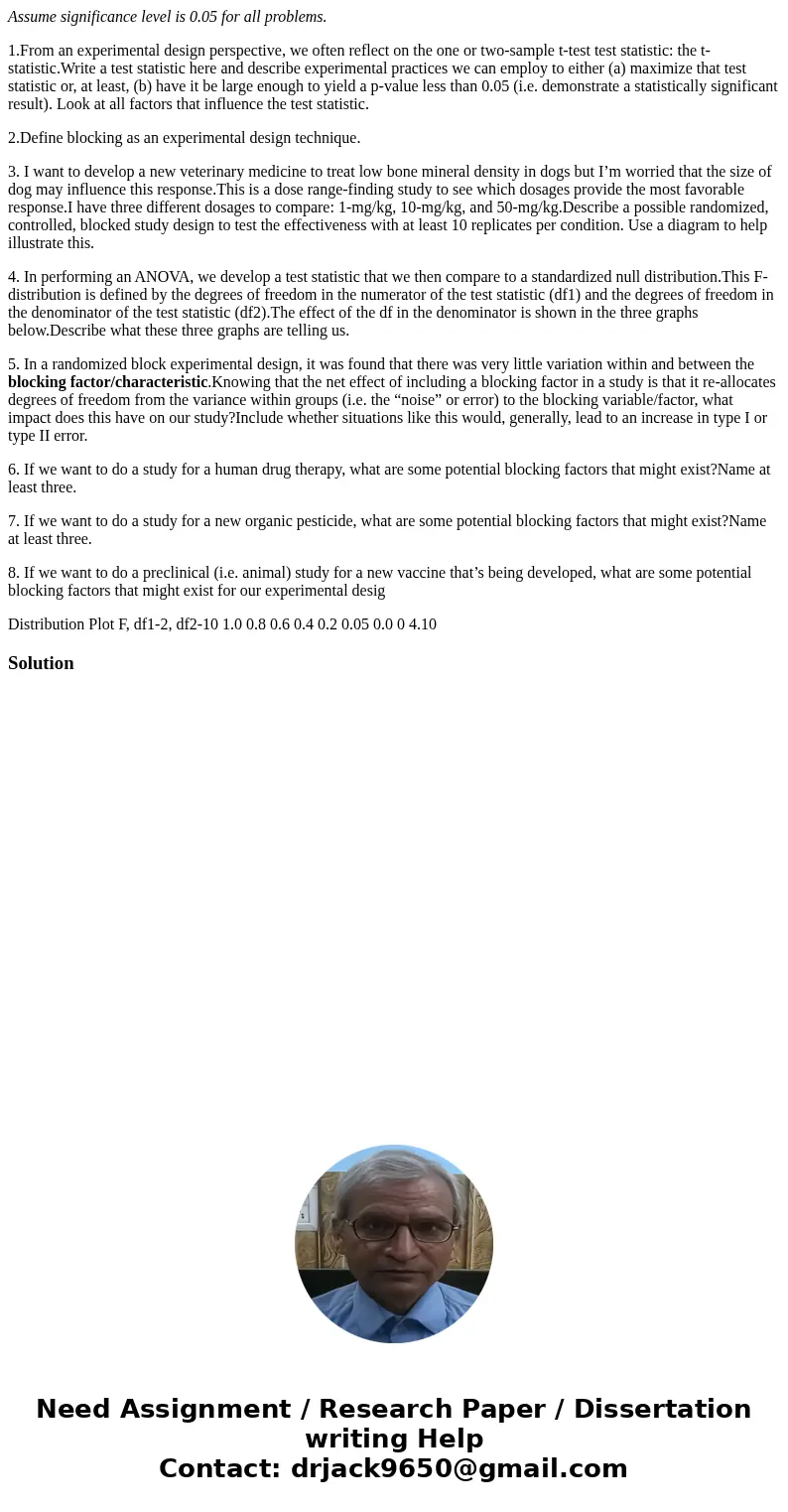Assume significance level is 005 for all problems 1From an e
Assume significance level is 0.05 for all problems.
1.From an experimental design perspective, we often reflect on the one or two-sample t-test test statistic: the t-statistic.Write a test statistic here and describe experimental practices we can employ to either (a) maximize that test statistic or, at least, (b) have it be large enough to yield a p-value less than 0.05 (i.e. demonstrate a statistically significant result). Look at all factors that influence the test statistic.
2.Define blocking as an experimental design technique.
3. I want to develop a new veterinary medicine to treat low bone mineral density in dogs but I’m worried that the size of dog may influence this response.This is a dose range-finding study to see which dosages provide the most favorable response.I have three different dosages to compare: 1-mg/kg, 10-mg/kg, and 50-mg/kg.Describe a possible randomized, controlled, blocked study design to test the effectiveness with at least 10 replicates per condition. Use a diagram to help illustrate this.
4. In performing an ANOVA, we develop a test statistic that we then compare to a standardized null distribution.This F-distribution is defined by the degrees of freedom in the numerator of the test statistic (df1) and the degrees of freedom in the denominator of the test statistic (df2).The effect of the df in the denominator is shown in the three graphs below.Describe what these three graphs are telling us.
5. In a randomized block experimental design, it was found that there was very little variation within and between the blocking factor/characteristic.Knowing that the net effect of including a blocking factor in a study is that it re-allocates degrees of freedom from the variance within groups (i.e. the “noise” or error) to the blocking variable/factor, what impact does this have on our study?Include whether situations like this would, generally, lead to an increase in type I or type II error.
6. If we want to do a study for a human drug therapy, what are some potential blocking factors that might exist?Name at least three.
7. If we want to do a study for a new organic pesticide, what are some potential blocking factors that might exist?Name at least three.
8. If we want to do a preclinical (i.e. animal) study for a new vaccine that’s being developed, what are some potential blocking factors that might exist for our experimental desig
Distribution Plot F, df1-2, df2-10 1.0 0.8 0.6 0.4 0.2 0.05 0.0 0 4.10Solution

 Homework Sourse
Homework Sourse